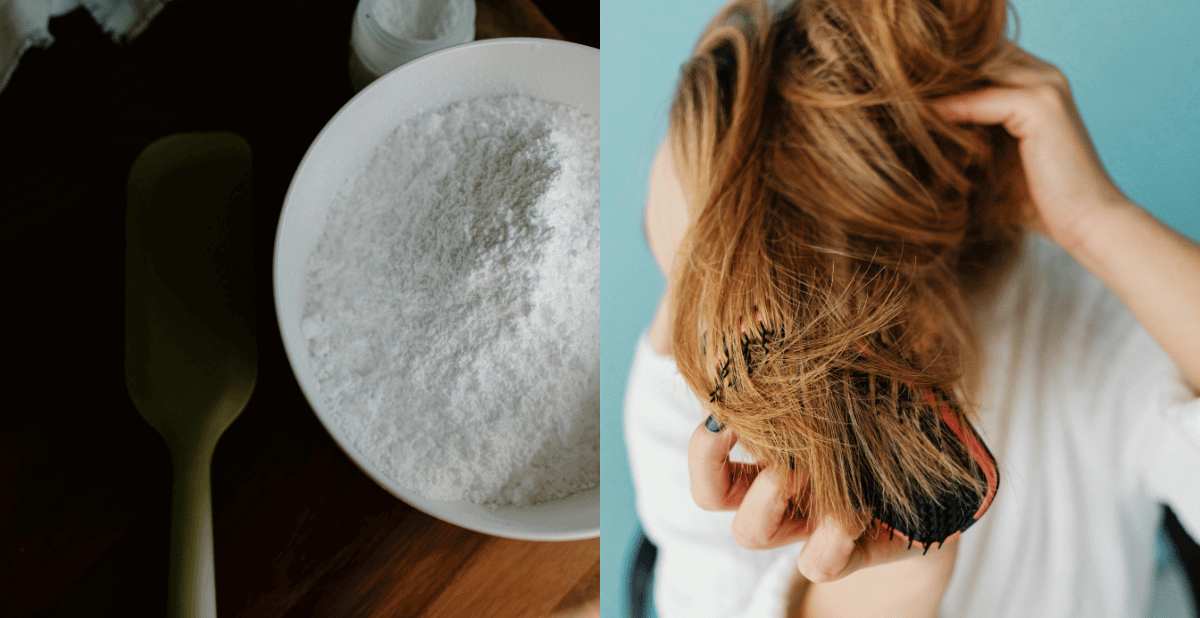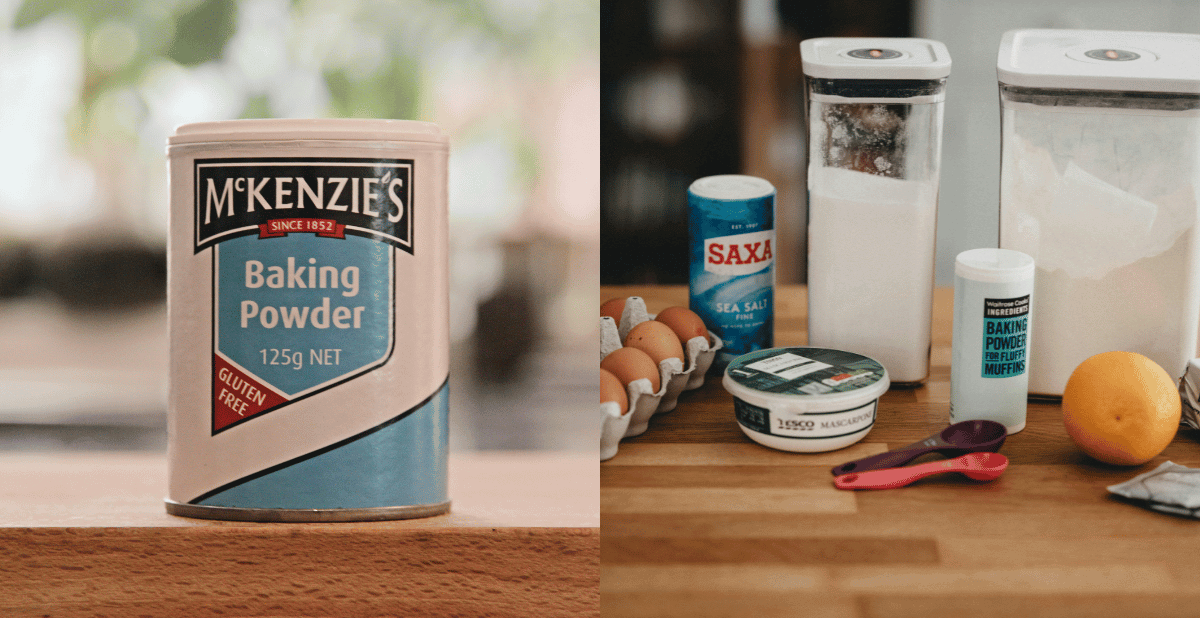Ever found yourself in a pinch, needing to freshen up your hair but without time for a full wash? You might have wondered, "Can I use baking powder as dry shampoo?"
But is it a good idea?
Let's dive into the nitty-gritty of using baking powder as a dry shampoo and explore some DIY alternatives that might save your day.
Key Takeaways:
- Baking powder can be a viable alternative to store-bought dry shampoo.
- Adding cocoa powder can help blend the mixture for darker hair.
- DIY dry shampoo recipes can be customized with essential oils for added benefits.
Ever found yourself in a pinch, needing to freshen up your hair but without time for a full wash? You might have wondered, "Can I use baking powder as dry shampoo?"
But is it a good idea?
Let's dive into the nitty-gritty of using baking powder as a dry shampoo and explore some DIY alternatives that might save your day.
What is Baking Powder?
Baking powder is a common kitchen staple, primarily used in baking to help the dough rise.
It consists of a combination of an acid (usually cream of tartar), a base (baking soda), and a moisture-absorbing agent like cornstarch.
This unique blend makes it an interesting candidate for absorbing excess oil from your scalp.
How Does Baking Powder Work as Dry Shampoo?
When you sprinkle baking powder onto your scalp, it soaks up the natural oils that make your hair look greasy.
The cornstarch in baking powder is particularly effective at absorbing oil, while the baking soda helps to neutralize any odors.
This combination can leave your hair looking fresher and cleaner without the need for a full wash.
Pros and Cons of Using Baking Powder as Dry Shampoo
Pros:
- Cost-Effective: Baking powder is inexpensive and readily available in most households.
- Quick Fix: It provides a fast solution for greasy hair when you're short on time.
- Natural Ingredients: Unlike some store-bought dry shampoos, baking powder doesn't contain harsh chemicals.
Cons:
- Potential Irritation: Baking soda can be harsh on the scalp, leading to dryness or irritation.
- Residue: Baking powder can leave a white residue, especially noticeable on dark hair.
- Not Long-Lasting: The effects may not last as long as commercial dry shampoos.
DIY Dry Shampoo Recipes
For Light Hair:
Mix 1/4 cup of baking powder with 1/4 cup of cornstarch. Add a few drops of your favorite essential oil for a pleasant scent.
Store the mixture in a small jar or a spice jar for easy application.
For Dark Hair:
Combine 1/4 cup of baking powder with 1/4 cup of cocoa powder.
The cocoa powder helps to blend the mixture with darker hair, reducing the risk of a white residue.
Add a few drops of tea tree or lavender essential oil for added benefits.
How to Apply DIY Dry Shampoo
- Preparation: Apply the mixture to your roots using a makeup brush or a powder spray bottle.
- Application: Sprinkle the powder onto your scalp, focusing on areas that tend to get greasy.
- Massage: Gently rub the powder into your scalp using your fingertips.
- Comb Through: Use a comb to distribute the powder evenly and remove any excess.
Tips for Using Baking Powder as Dry Shampoo
- Test First: Before applying the mixture to your entire scalp, do a patch test to ensure you don't have an adverse reaction.
- Use Sparingly: A little goes a long way. Overuse can lead to a buildup of powder on your scalp.
- Blend Well: For darker hair, make sure to blend the cocoa powder thoroughly to avoid visible residue.
The Science Behind Baking Powder as Dry Shampoo
Baking powder, a common kitchen staple, contains acid salts and a base, which work together to absorb oils and moisture from your scalp.
Using baking powder as dry shampoo effectively soaks up excess oils, leaving your hair looking fresh and clean.
This is particularly beneficial for those with thin hair, as it adds volume without the need for washing.
However, it's essential to note that baking powder differs from baking soda, another popular ingredient in homemade dry shampoo recipes.
Using baking powder as a dry shampoo can be a great idea for a quick fix, but it’s not without its drawbacks.
For instance, the fine particles can sometimes leave a white residue, especially on dark hair.
This can be a bit of a mess to clean up and might require more effort to blend into your roots.
Additionally, while baking powder can absorb oils, it doesn't provide the same styling benefits as store-bought dry shampoos.
Therefore, weighing the pros and cons before deciding to use baking powder as a regular hair product is crucial.
How to Store Your DIY Dry Shampoo
Storing your homemade dry shampoo properly is crucial for maintaining its effectiveness.
A powder spray bottle is an excellent choice for easy application and minimal mess.
Simply fill the bottle with your DIY mixture and keep it in a cool, dry place.
This ensures the ingredients remain potent and ready to use whenever you need a quick hair refresh.
Another option is to use an airtight container.
This method works well if you prefer to apply the powder with a makeup brush.
Just dip the brush into the container, tap off the excess, and apply it to your roots.
Whichever method you choose, make sure to label your container to avoid any mix-ups with other household items.
Proper storage extends the life of your homemade dry shampoo and makes your hair care routine more efficient.
Combining Baking Powder with Other Ingredients
Combining baking powder with other natural ingredients can be a great idea for enhancing a homemade dry shampoo recipe.
For example, mixing baking powder with corn starch can improve its oil-absorbing capabilities.
Corn starch is known for its ability to soak up more oils, making it an excellent addition to your DIY dry shampoo.
You can also add a bit of cinnamon for a pleasant scent and to help blend the powder into darker hair.
Another simple recipe involves mixing baking powder with arrowroot powder and a few drops of essential oils.
This combination helps absorb oils and adds a refreshing scent to your hair.
Using a powder spray bottle can make the application process less messy and more efficient.
Just remember to shake the bottle well before each use to ensure the ingredients are evenly distributed.
This method can be particularly useful for those with long hair, as it allows for more precise application to the roots without creating a mess.
Alternatives to Baking Powder
Cornstarch:
Cornstarch is another kitchen staple that can be used as dry shampoo.
It effectively absorbs oil and is less likely to cause irritation than baking soda.
Arrowroot Powder:
Arrowroot powder is a natural alternative to cornstarch.
It's gentle on the scalp and can be mixed with cocoa powder for darker hair.
Baby Powder:
Baby powder is a popular alternative to dry shampoo.
It absorbs oil and leaves a pleasant scent, but be cautious of inhaling the fine particles.
Store-Bought Dry Shampoos
If DIY isn't your thing, plenty of store-bought dry shampoos are available. These products are specifically formulated to absorb oil and refresh your hair. Look for options that suit your hair type and color to avoid any unwanted residue.
The No-Poo Method
The no-poo method involves skipping traditional shampoos altogether and using natural alternatives like baking powder or apple cider vinegar.
This method aims to reduce the dependency on commercial hair products and promote a healthier scalp.
Essential Oils for Added Benefits
Adding essential oils to your DIY dry shampoo can provide additional benefits.
For example, tea tree oil has antimicrobial properties, while lavender oil can help soothe the scalp.
Experiment with different oils to find the perfect blend for your hair.
Common Mistakes to Avoid
- Overuse: Using too much baking powder can lead to a buildup on your scalp, making your hair look dull.
- Not Blending: Failing to blend the mixture well can result in visible residue, especially on dark hair.
- Skipping the Patch Test: Always do a patch test to ensure you don't have an adverse reaction to the ingredients.
Case Study: Sarah's Experience
Sarah, a busy mom of two, often found herself with little time to wash her hair.
She decided to try using baking powder as a dry shampoo.
Initially, she was thrilled with the results—her hair looked fresher, and she loved the convenience.
However, she noticed her scalp becoming dry and irritated after a few uses.
Sarah switched to a cornstarch-based DIY dry shampoo and added a few drops of lavender oil.
This new blend worked wonders, leaving her hair fresh without any irritation.
FAQs
Can I use baking powder as a dry shampoo on dark hair?
Yes, but mixing it with cocoa powder is advisable to avoid a white residue.
Is it safe to use baking powder as dry shampoo regularly?
Using baking powder occasionally is generally safe, but frequent use can lead to scalp irritation.
Consider alternatives like cornstarch or arrowroot powder for regular use.
How do I store my DIY dry shampoo?
Store your DIY dry shampoo in a small jar or spice jar for easy application. Keep it in a cool, dry place to maintain its effectiveness.
Until Next Time...
So, there you have it! Baking powder can be a quick and cost-effective dry shampoo solution for greasy hair.
It's a nifty little trick that can save you time and money.
However, it's essential to be mindful of potential irritation and residue, especially for those with darker hair.
No one wants to walk around with a chalky scalp, right?
Experiment with different DIY recipes and essential oils to find the perfect blend for your hair type.
You might discover a concoction that works wonders for you.
But hey, if DIY isn't your thing, don't sweat it.
Plenty of store-bought options can keep your hair looking fresh and clean without the hassle.
At the end of the day, it's all about finding what works best for you and your hair.
So, whether you decide to do it yourself or stick with your favorite brand, just remember to keep your hair happy and healthy.
Happy experimenting!
MommaPuff







